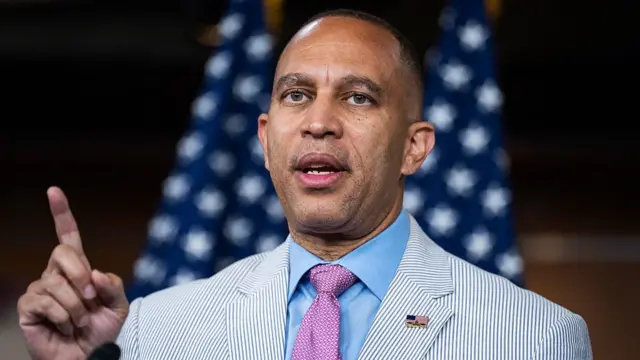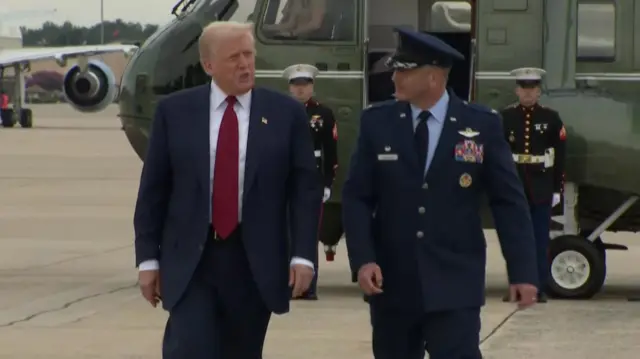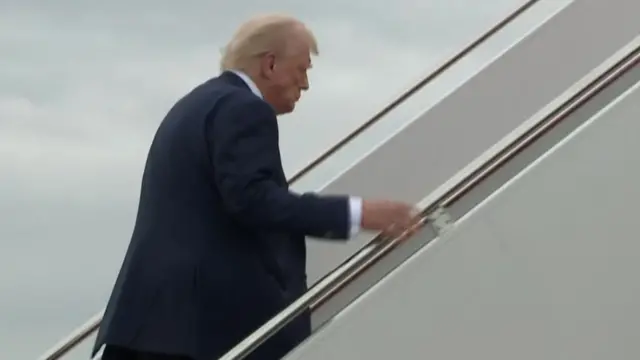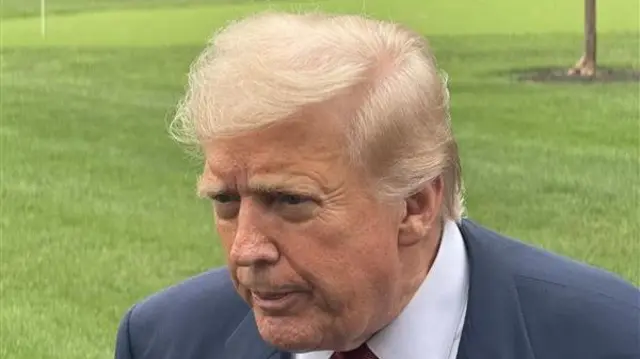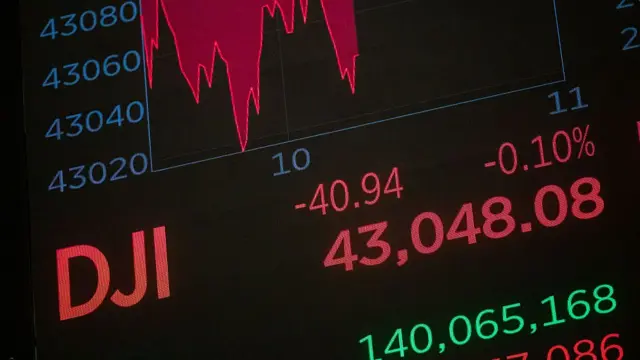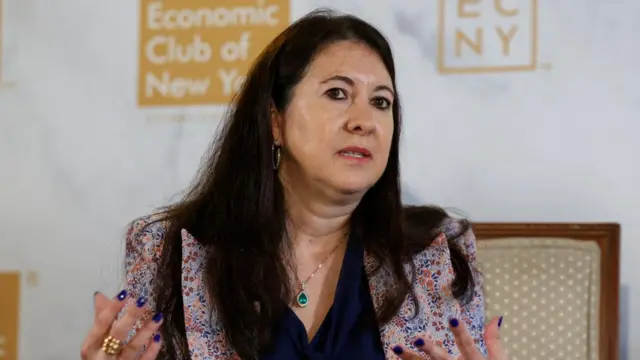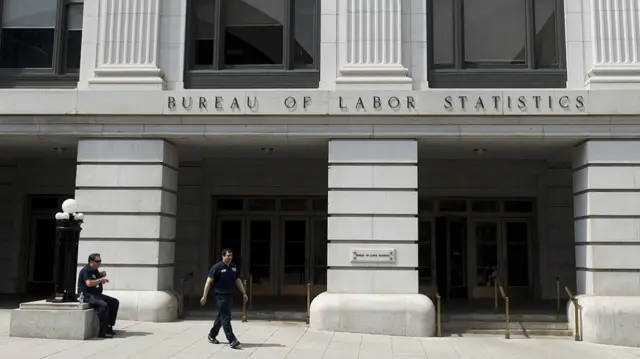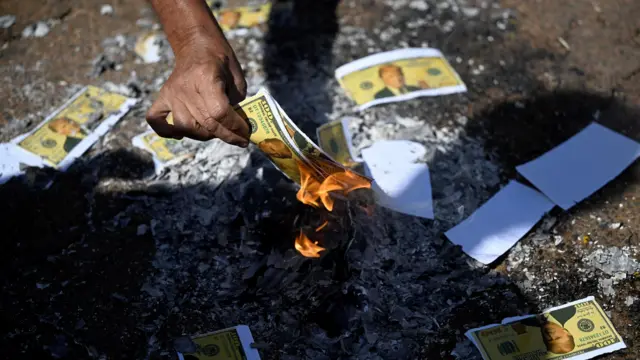Trump's tariffs, firing of labour statistics official dominate another busy daypublished at 22:56 BST 1 August
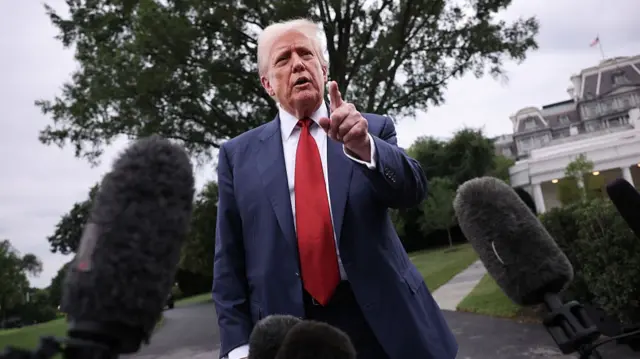 Image source, Getty Images
Image source, Getty ImagesIt's been another busy day at the White House, and at trade offices around the world in the wake of Trump's tariffs going into effect. Here's what happened Friday:
- Trump's newest round of tariffs kicked in today. Brazilian imports face the highest-announced 50% tariff, while the levy on Canadian products been raised from 25% to 35%
- Global markets traded lower on Friday as the scale of the tariffs, especially among key US allies, became clearer
- Trump fired Bureau of Labor Statistics Commissioner Erika McEntarfer, accusing her, without providing evidence, of manipulating jobs data to help the Democrats during the 2024 election
- The bureau released updated jobs numbers for May and June, showing each month saw thousands fewer jobs created than previously reported - revisions are common due to late responses from some businesses, but are usually smaller than Friday's updates
- Top Democratic Senator Chuck Schumer blamed Trump's tariffs for the slowdown, saying they are "bleeding the economy", while top House Democrat Hakeem Jeffries accused the administration of "firing anyone who stands in the way of their lies"
- The president has now left the White House, and is set to spend the weekend at his golf club in Bedminster, New Jersey
We are closing our live coverage of the US economy, but you can stay up-to-date on the latest developments here: Trump says he will fire lead official on economic data as stocks shudder
Thank you for joining us.
